| Date | Text | |
|---|---|---|
30 Nov 1962

J. B. S. Haldane |
J. B. S. Haldane (biology) Geneticist J. B. S. Haldane coins the word "clone". |
|
30 Nov 1962

Molecular biologist |
Molecular biologist (biology) Molecular biologist Emile Zuckerkandl and physical chemist Linus Pauling introduce the term paleogenetics. |
|
30 Nov 1962

Konrad Lorenz |
Konrad Lorenz (biology) Konrad Lorenz publishes On Aggression (Das sogenannte Böse: Zur Naturgeschichte der Agression). |
|
30 Nov 1962

Niko Tinbergen |
Niko Tinbergen (biology) Niko Tinbergen poses his four questions to be asked of any animal behavior. |
|
30 Nov 1962

Robinson projection |
Robinson projection (cartography) Robinson projection devised by Arthur H. Robinson. |
|
30 Nov 1962

Kenneth Hudson |
Kenneth Hudson (history of science a) Kenneth Hudson's Industrial Archaeology: an introduction published in London. |
|
30 Nov 1962

Edward Lorenz |
Edward Lorenz (mathematics) Edward Lorenz publishes his discovery of the 'butterfly effect', significant in the development of chaos theory. |
|
30 Nov 1962
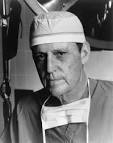
Thomas Starzl |
Thomas Starzl (medicine) Thomas Starzl performs the first liver transplantation, at the University of Colorado Health Sciences Center. |
|
30 Nov 1962

lung transplantation |
lung transplantation (medicine) James D. Hardy performs the first lung transplantation. |
|
30 Nov 1962
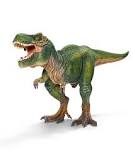
dinosaur |
dinosaur (paleontology) The type species of the early dinosaur Herrerasaurus, Herrerasaurus ischigualastensis from the north of Argentina, is described by Osvaldo Reig. |
|
30 Nov 1962
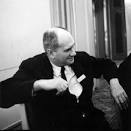
David H. Frisch |
David H. Frisch (physics) David H. Frisch and J. H. Smith prove radioactive decay of mesons is slowed by their motion. (See Einstein's special relativity and general relativity.) |
|
30 Nov 1962

Stanley Milgram |
Stanley Milgram (psychology) Stanley Milgram publishes the results of his shock experiment on obedience to authority figures. |
|
30 Nov 1962

Lava lamp |
Lava lamp (technology) Lava lamp invented by Edward Craven Walker. |
|
30 Nov 1962
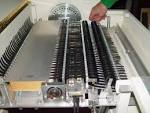
Mellotron |
Mellotron (technology) Mellotron Mark I electro-mechanical, polyphonic tape replay keyboard, developed and built in Aston, Birmingham, England, is marketed. |
|
30 Nov 1962
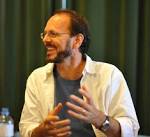
W. Tecumseh Fitch |
birth W. Tecumseh Fitch W. Tecumseh Fitch, American-born evolutionary biologist. |
|
30 Nov 1962
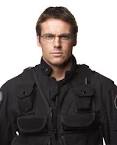
Daniel Jackson |
birth Daniel Jackson Daniel Jackson, English-born American computer scientist. |
|
04 Jan 1963

Luna |
Luna (astronomy and space ) Soviet Luna reaches Earth orbit but fails to reach the moon. |
|
04 Jan 1963
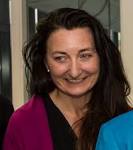
May-Britt Moser |
birth May-Britt Moser May-Britt Moser, Norwegian neuroscientist, winner of the Nobel Prize in Physiology or Medicine. |
|
28 Jan 1963

Jean Piccard |
death Jean Piccard Jean Piccard (born 1884), Swiss-born American chemist and explorer. |
|
09 Feb 1963

Brian Greene |
birth Brian Greene Brian Greene, American theoretical physicist. |
|
10 Feb 1963

Vivian Wing-Wah Yam |
birth Vivian Wing-Wah Yam Vivian Wing-Wah Yam, Hong Kong chemist working on OLEDs. |
|
27 Feb 1963

David Keilin |
death David Keilin Died 27 Feb 1963 at age 75 (born 21 Mar 1887). Russian-British biochemist who discovered cytochromes, as enzymes critical to the cell's use of oxygen (1923). His career began as an entomologist studying the life cycles of flies. While studying the absorption spectrum of the muscles of the horse botfly, that he noticed four absoption bands that disappeared when the cell suspension was shaken in air, but reappeared afterwards. He had found a respiratory enzyme. He named it cytochrome, and began a thorough investigation of its role in cellular respiration. Like haemoglobin, the cytochrome enzyme contains iron. Cytochrome is a pigment found in some cells, such as bacteria and yeast. He studied also catalase and peroxidase which are also iron-containing enzymes with a role involving oxygen. |
|
01 Apr 1963

Ministry of Public Building and Works (Great Britain) |
Ministry of Public Building and Works (Great Britain) (history of science a) Industrial Monuments Survey for the Ministry of Public Building and Works (Great Britain) commenced by Rex Wailes. |
|
06 Apr 1963
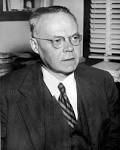
Otto Struve |
death Otto Struve Otto Struve (born 1897), Russian astronomer. |
|
12 Apr 1963

Kazimierz Ajdukiewicz |
death Kazimierz Ajdukiewicz Died 12 Apr 1963 at age 72 (born 12 Dec 1890). Polish logician and semanticist who was the chief contributor to the Warsaw school of philosophy and logic, and is credited with developing in 1920 the first deductive theory for the study of logic based on syntax. The dominant theme of Ajdukiewicz's thought was the problem of the dependence of our knowledge and conception of knowledge on language. His main contributions are in the field of logical syntax (with the theory of semantical categories) and in epistemology, with the so-called “radical conventionalism,” a doctrine where he claimed that there exist conceptual apparatuses which are not intertranslatable and that scientific knowledge grows through the replacement of one such conceptual apparatus by another. |
|
12 Apr 1963
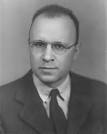
Alfred Métraux |
death Alfred Métraux Died 12 Apr 1963 at age 60 (born 5 Nov 1902). Swiss anthropologist noted for his pioneering contributions to South American ethnohistory and the examination of African culture in Haiti. While director of the ethnological institute at the University of Tucumán, Argentina, (1928-34) he wrote two classic works on the ethnohistory of the extinct Tupinambá Indians of Brazil. He made an expedition to Easter Island (1934-35), after which he argued that Easter Island's indigenous population is Polynesian, both culturally and physically, and that the island's well-known monolithic sculptures are native creations rather than Asian or American Indian ones. After travelling the Amazon (1947-48) he studied the Haiti island culture (1949-50). He viewed voodoo as a structured, complex religious system with African origins. |
|
15 May 1963

Final Project Mercury mission |
Final Project Mercury mission In 1963, astronaut L. Gordon Cooper blasted off aboard Faith 7 on the final mission of the Project Mercury space program. |
|
15 May 1963
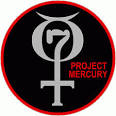
Mercury program |
Mercury program (astronomy and space ) Mercury program: NASA launches the last mission of the program Mercury 9. (On June 12 NASA Administrator James E. Webb tells Congress the program is complete.) |
|
19 May 1963

Walter Russell |
death Walter Russell Walter Russell (born 1871), American polymath. |
|
01 Jun 1963

kidney transplantation |
kidney transplantation (medicine) Guy Alexandre performs the first kidney transplantation from a heart-beating, brain-dead donor, at Saint Pierre Hospital, Leuven, Belgium. |
|
18 Jul 1963
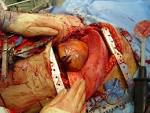
Heart Surgery |
Heart Surgery In 1963, the first implantation of an intrathoracic left artificial ventricle in a human being was made by Dr. E. Stanley Crawford, at the Baylor University College of Medicine, Methodist Hospital, Houston Tx. USA. The original prototype is kept and exhibited at the Smithsonian Institution, Washington, DC. Within a few years, on 4 Apr 1969, the first total artificial heart was implanted, used as a bridge to heart transplantation by Dr. Denton A. Cooley, at the Texas Heart Institute, Houston Tx. USA. |
|
30 Aug 1963

Marietta Pallis |
death Marietta Pallis Marietta Pallis (born 1882), British ecologist. |
|
07 Sep 1963

Fred Vine |
Fred Vine (earth sciences) British geophysicists Fred Vine and Drummond Matthews publish proof of seafloor spreading on the Atlantic Ocean floor. |
|
30 Sep 1963

Gerenuk born in U.S. |
Gerenuk born in U.S. In 1963, the first birth of a gerenuk in the U.S. occurred at the Zoological Park, Bronx Park, New York City. Gerenuks (Litocranius walleri) are reddish-brown antelopes from eastern Africa. It is also known as the giraffe gazelle, for its the long neck. When its neck isn't quite long enough for it to reach certain branches, a geranuk will sometimes be seen standing on its hind legs to reach them. |
|
02 Oct 1963

Olga Lepeshinskaya |
death Olga Lepeshinskaya Olga Lepeshinskaya (born 1871), Soviet Lysenkoist biologist. |
|
13 Oct 1963

A.A. Griffith |
death A.A. Griffith Died 13 Oct 1963 at age 70 (born 13 Jun 1893). Alan Arnold Griffith was a British aeronautical engineer. During the late 1920s, A.A. Griffith and F. Whittle independently made the first practical proposals for the use of gas turbine engines in aircraft. Griffith concentrated on developing an axial flow compressor, and in 1929 he proposed a gas turbine engine driving a propeller, the so called turbo-prop engine. Earlier, in 1917, with G.I.Taylor, he published a pioneering article on the use of soap films in solving torsion problems. In 1920, he published a seminal article on the theory of the brittle fracture. At Rolls Royce (1939-60) he designed turbojet engines, and in the 1950s, vertical take-off aircraft. He developed the remarkable "flying bedstead" which first flew in 1954. |
|
13 Oct 1963

Alan A. Griffith |
death Alan A. Griffith Alan A. Griffith (born 1893), English stress engineer. |
|
25 Oct 1963

Karl von Terzaghi |
death Karl von Terzaghi Karl von Terzaghi (born 1883), Austrian "father of soil mechanics". |
|
01 Nov 1963
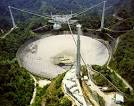
Arecibo Observatory |
Arecibo Observatory (astronomy and space ) The Arecibo Observatory, with the world's largest single-dish radio telescope, officially opens in Arecibo, Puerto Rico. |
|
14 Nov 1963

Icelandic |
Icelandic (earth sciences) The Icelandic volcanic island of Surtsey appears above sea level. |
|
23 Nov 1963

science fiction television |
science fiction television First episode of science fiction television series Doctor Who broadcast by the BBC in the United Kingdom. |